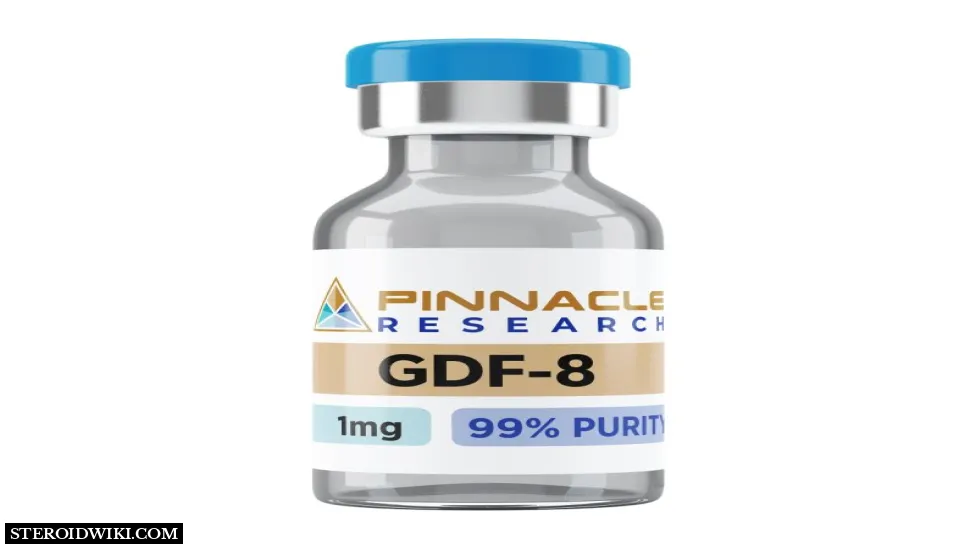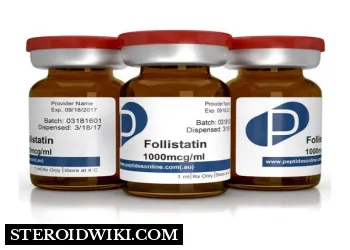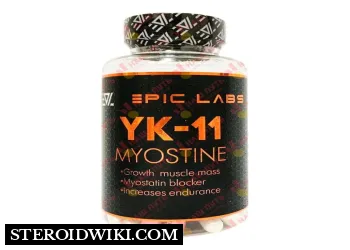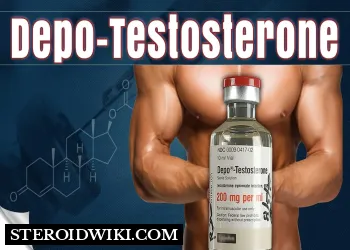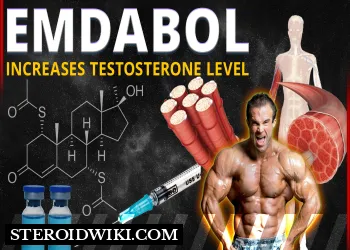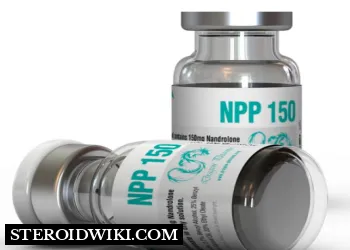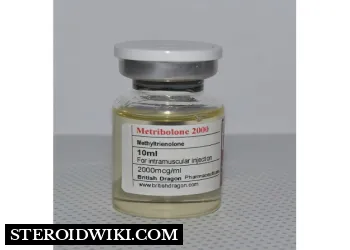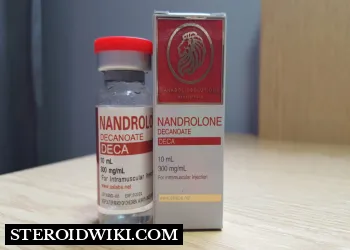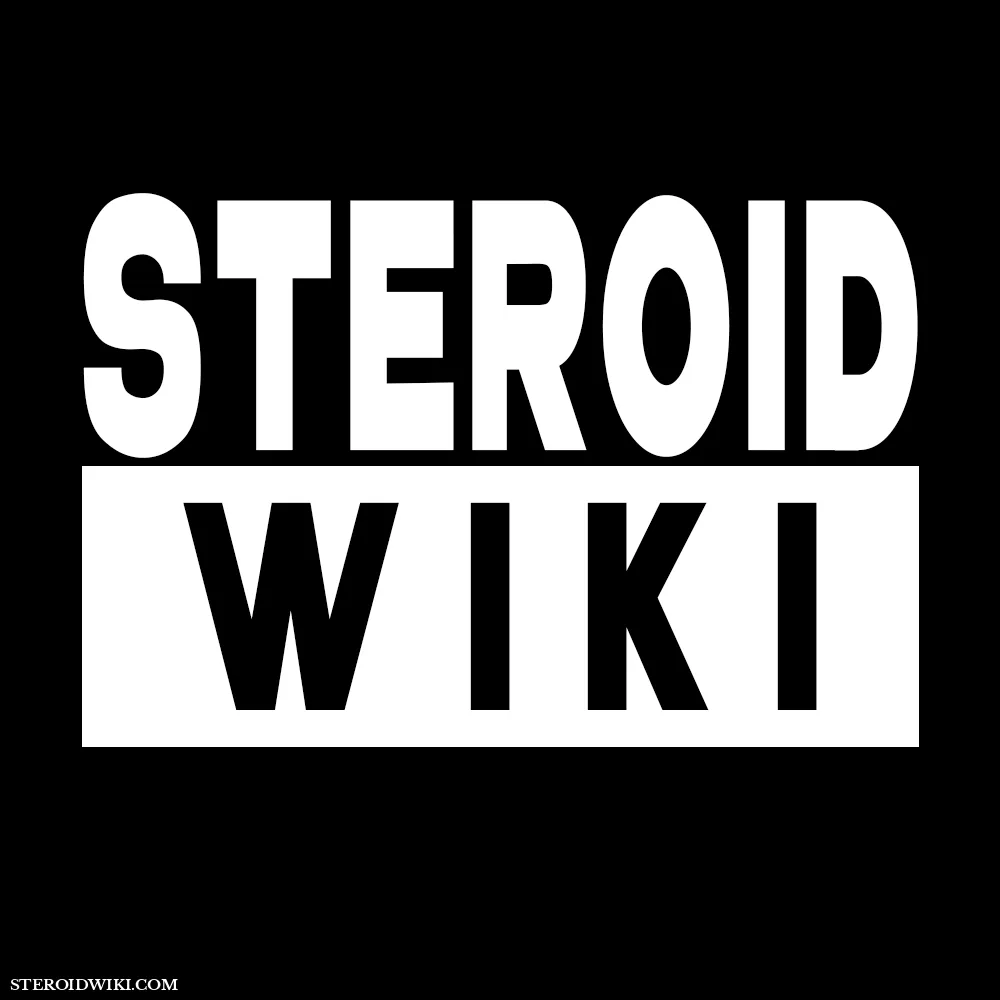GDF 8 Myostatin Complete Profile, Dosage, Half-life, Mechanism of Action, Advantages and Disadvantages
GDF 8 Myostatin Peptide Overview
Table of Contents
- Main Points
- Introduction and Background
- The Function of GDF-8 in the Human Body
- Treatments Performed by GDF-8 Myostatin
- Advisable Dosage of GDF-8 Myostatin
- Storage Requirement for GDF-8 Myostatin
- Advantages of Using GDF 8, Myostatin
- Side Effects Associated with the Use of GDF 8 Myostatin
- Top 3 Academic Research Papers About Myostatin (GDF-8)
- Reference
Are you exploring a peptide that can assist you in building or enhancing your muscles? If so, you may have heard about GDF-8, which is the best source for regulating muscle growth.
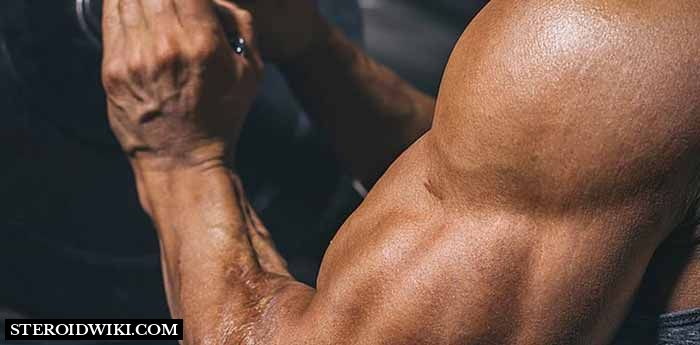
GDF-8 is a myostatin inhibitor that blocks the malfunctioning of muscle tissues.
Main Points
-
Product Category: Cytokines
-
Protein type: Secreted
-
Product Name: Myostatin (GDF8)
-
Synonyms: MSTN; myostatin; gdf8
-
Product Gene Name: GDF8 Active Protein
-
Form: Sterile Filtered White Lyophilized
-
Solubility: Water Soluble
-
Storage: -20°C
-
Molecular formula: C221H366N72O67S
Introduction and Background
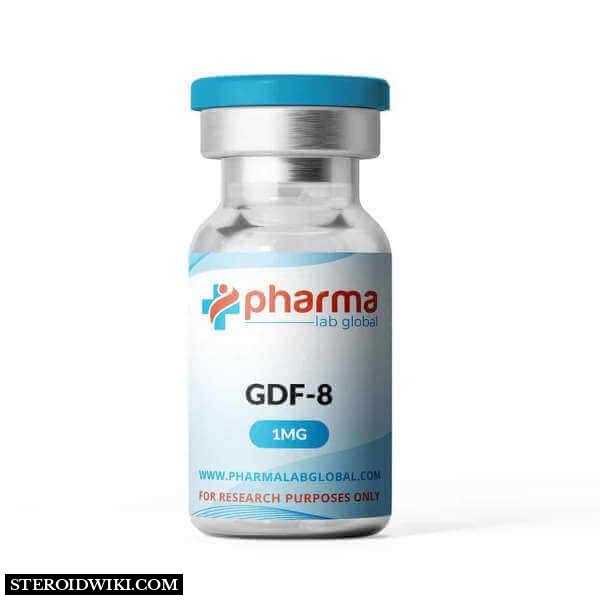
Myostatin, also referred to as Growth Differentiation Factor 8 (GDF-8), is a type of protein that is developed and released by Myocytes. It works on adult skeletal muscle cells to inhibit myogenesis.
GDF-8 Myostatin was produced in 1997 by geneticists; Se-Jin Lee and Alexandra McPherron. The main purpose of discovering this member of the TGF Beta Protein Family was to regulate cell growth and differentiation in both embryonic and adult tissues. It also aids in controlling myoblast proliferation. This peptide is composed of a very potent blend of amino acids and other essential nutrients that are found in plant products. These nutrients combine to form an organic composition that encourages the body to manufacture enough testosterone to support the growth of lean muscle.
Most bodybuilders and athletes nowadays use peptides like GDF-8 to increase their muscle mass, fasten muscle recovery, and improve endurance. Additionally, certain peptides may promote the production of hormones that are known to promote muscle growth, body fat loss, exercise performance, and recovery. Because of this, they appeal especially to bodybuilders looking to get the most out of their training.
The Function of GDF-8 in the Human Body
Growth Differentiation Factor GDF-8 is a sort of protein that is derived from a substance named Serpin (a superfamily of proteins). This peptide is getting enough fame in bodybuilding and fitness freak’s world due to its selective functionality in the human body. The elements inside this peptide form an organic composition that is crucial for bodybuilder’s needs.
It controls myoblast proliferation which is an influential negative regulator of skeletal muscle mass. GDF-8 works in the body of both humans and animals by preventing myostatin from activating and binding to its receptors. This deficiency of myostatin causes substantial gains in muscle mass. GDF-8, after stopping myogenesis, heals muscles that stimulate the growth of muscular tissues. Muscles and bones can heal more quickly by preventing the production of active myostatin via recombinant myostatin propeptide. Hence, Myostatin inhibitors can contribute to the healing of deep, penetrating wounds in your bones and muscles. Moreover, bone mineral density also rises as a result of myostatin deficiency.
Treatments Performed by GDF-8 Myostatin
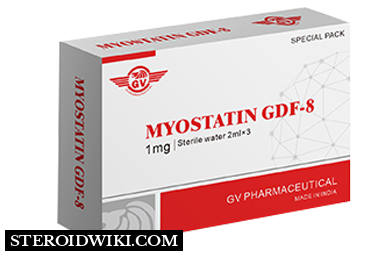
Several peptides are now emerging as potent compounds in the realm of medical treatments. This can be beneficial for general people as well as bodybuilders. Growth Differentiation Factor, or GDF-8, offers a diverse range of therapeutic possibilities. From addressing wound repair in cases of deep injuries to bones and muscles to age-related muscle loss and wasting concerns, it is proven to have potential in the world of medicine.
Studies in the past have shown that this peptide can handle a severe form of heredity disease, Duchenne muscular dystrophy. Duchenne muscular dystrophy (DMD) is a hereditary condition that causes progressive muscle deterioration and weakening due to changes in a protein. However, more studies must be done in order to find out this peptide’s efficacy in treating illnesses related to muscle wasting. Nevertheless, since myostatin inhibitors deplete muscle stem cells, which could make the problem worse, they might not be useful for the long-term treatment of muscular dystrophy.
Advisable Dosage of GDF-8 Myostatin
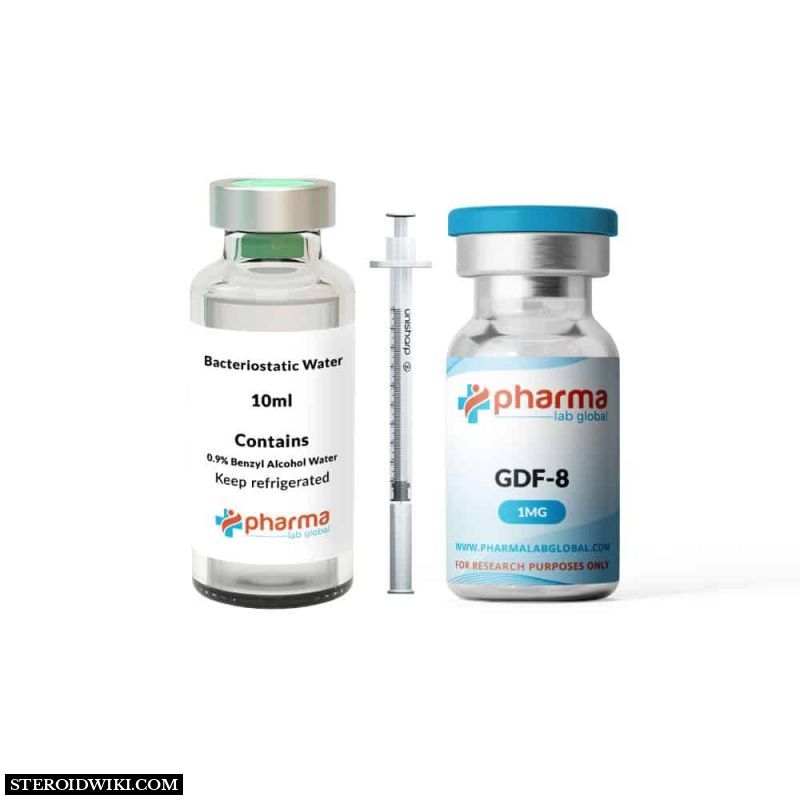
If you are taking this peptide to enhance your muscle growth, then 1 mg of GDF-8 per day is a sufficient dose. For muscle gains, GDF-8 is known as the best peptide on the market currently. This peptide is injected subcutaneously, yet it can also be dosed intramuscularly.
GDF-8 has a half-life of about 5 days; therefore, based on the extended half-life of the peptide, it should be used every five days over a 25-day period for the optimum results. GDF-8 is stable once injected, so you don’t have to worry about the after-effects.
Storage Requirement for GDF-8 Myostatin
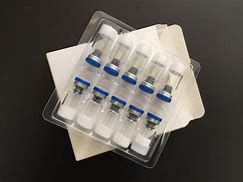
It is crucial to think about the circumstances that can support GDF-8 myostatin's stability throughout time while storing it.
It can be stored in a refrigerator at 4 °C or below for up to 3 months. The peptides can be stored in the freezer for up to 12 months to extend their shelf life. Peptides should be kept cold or stored at 4°C for up to 30 days after being reconstituted.
Advantages of Using GDF 8, Myostatin
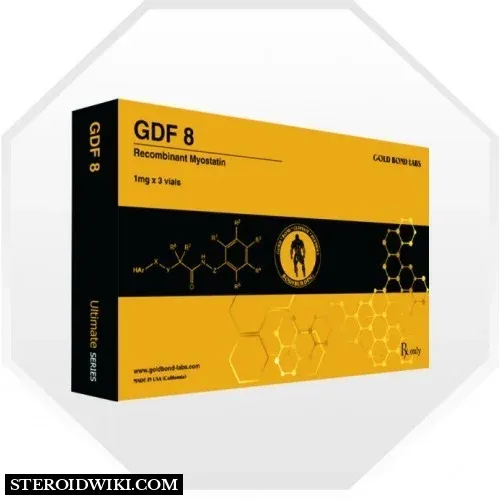
Peptides have loomed as an innovative tool in the world of bodybuilding, delivering numerous advantages to athletes and fitness enthusiasts. This short chain of amino acids works unlike traditional steroids offering a more specific and natural approach to achieving desired fitness outcomes. In addition, unlike most steroids, the peptides and SARMS do not require extended Post Cycle Therapy.
GDF 8 Myostatin effects were studied on rats and mice in order to find out their results. GDF-8 demonstrated its potency in increasing muscle mass and strength. It increases the calcium levels in bones, which is an essential element for the proper functionality of muscles, nerves, and the heart as well. It also aids in preventing blood clotting. Moreover, GDF-8 enhances muscle regeneration, demonstrating its effectiveness in treating muscular injuries.
GDF-8 1mg has been specially developed for sportsmen and bodybuilders who are looking for a powerful way to accomplish their fitness objectives more quickly. It has an amazing ability to speed up muscle growth and development which makes this peptide a perfect choice for those willing to gain the most out of their workouts. It tends to help in the formation of bone tissue, making bone marrow functionality effective in the body. So, if you're seeking a peptide to aid muscle growth and damage healing, GDF-8 might be the one for you!
Side Effects Associated with the Use of GDF 8 Myostatin
While peptides have gained enormous attention for their potential advantages in the bodybuilding world, it is important to consider that they are not without their possible side effects. Like other performance-enhancing drugs, the use of peptides can cause a range of drawbacks to bodybuilders and athletes. In order to make wise choices about whether to include these side effects in your fitness regimen, it is essential to understand their implications. These side effects can range in intensity and signs.
For GDF 8 Myostatin, there is less research done therefore the severity of side effects is still ambiguous. However, in the studies performed on rats and mice, the reported effects of GDF 8 1mg/day demonstrated no harsh side effects. Hence, the drawbacks of putting GDF-8 in your system are unknown. Nevertheless, it is possible that a user can experience local irritation at the site of injection.
You can also try Hexarelin Acetate to increase muscle mass, improve muscle fiber repair, and lose fat quickly. Learn about diverse HGH and Peptides on the SteroidWiki website to upgrade your knowledge and choose the perfect supplement for your needs.
Top 3 Academic Research Papers About Myostatin (GDF-8)
1 . "Myostatin: a multifunctional role in human female reproduction and fertility" by the Journal of Reproductive Biology and Endocrinology
The paper "Myostatin: A Multifunctional Role in Human Female Reproduction and Fertility" (2022) provides a comprehensive review of the current literature on the role of myostatin in human female reproduction and fertility.
Myostatin is a protein that is best known for its role in regulating muscle growth and development. However, in recent years, researchers have discovered that myostatin also plays a role in a variety of other tissues and organs, including the female reproductive system.
The paper reviews the evidence that myostatin is involved in a number of key reproductive processes, including:
- Follicular development: Myostatin is expressed in the ovaries, and it is thought to play a role in the regulation of ovarian follicle growth and development.
- Ovarian steroidogenesis: Myostatin also regulates the production of ovarian steroids, such as estrogen and progesterone, which are essential for ovulation and fertility.
- Oocyte maturation: Myostatin is expressed in oocytes, and it is thought to play a role in the maturation of oocytes.
- Implantation: Myostatin is expressed in the endometrium, the lining of the uterus, and it is thought to play a role in implantation of the embryo into the uterus.
- Placental development: Myostatin is expressed in the placenta, and it is thought to play a role in placental development and function.
In addition to its role in normal reproductive function, myostatin has also been implicated in the development of a number of reproductive disorders, such as polycystic ovarian syndrome (PCOS), preeclampsia, and uterine fibroids.
The paper concludes by discussing the potential therapeutic implications of targeting myostatin in the treatment of reproductive disorders. For example, myostatin inhibitors could be used to improve ovarian function in women with PCOS or to prevent preeclampsia in women at high risk for the condition.
Details about the paper:
- Journal: Reproductive Biology and Endocrinology
- Publication Date: July 2, 2022
- Authors: Sijia Wang, Lanlan Fang, Luping Cong, Jacqueline Pui Wah Chung, Tin Chiu Li, and David Yiu Leung Chan
- Affiliations: Assisted reproductive technologies unit, Department of Obstetrics and Gynecology, Faculty of Medicine, The Chinese University of Hong Kong, Hong Kong, SAR, China; Center for Reproductive Medicine, Henan Key Laboratory of Reproduction and Genetics, The First Affiliated Hospital of Zhengzhou University, Zhengzhou, 450003, China
The paper is a comprehensive and well-written review of the current literature on the role of myostatin in human female reproduction and fertility. It is a valuable resource for researchers and clinicians who are interested in this topic.
Source: https://pubmed.ncbi.nlm.nih.gov/35780124/
2. "Myostatin (GDF-8) as a key factor linking muscle mass and bone structure" by Journal of Musculoskeletal & Neuronal Interactions.
The paper "Myostatin (GDF-8) as a key factor Linking muscle mass and bone structure" (2010) reviews the evidence that myostatin, a protein that negatively regulates muscle growth, also plays a role in regulating bone structure.
The paper begins by discussing the mechanisms by which myostatin regulates muscle growth. Myostatin binds to a receptor on muscle cells, which activates a signaling pathway that inhibits muscle growth. Mice that lack the myostatin gene have increased muscle mass, while mice that have increased levels of myostatin have decreased muscle mass.
The paper then discusses the evidence that myostatin also regulates bone structure. Mice that lack the myostatin gene have increased bone density and strength. Myostatin has been shown to directly inhibit the proliferation and differentiation of osteoblasts, the cells that build bone.
The paper concludes by discussing the potential therapeutic implications of targeting myostatin to increase muscle mass and bone density. Myostatin inhibitors could be used to treat muscle wasting conditions, such as sarcopenia, and to prevent osteoporosis.
Details about the paper:
- Journal: Journal of Musculoskeletal & Neuronal Interactions
- Publication Date: March 2010
- Author: Michael W. Hamrick
- Affiliation: Department of Physiology and Biophysics, University of Kentucky, Lexington, KY, USA
The paper is a well-written and informative review of the current literature on the role of myostatin in regulating muscle mass and bone structure. It is a valuable resource for researchers and clinicians who are interested in this topic.
Additional information:
Myostatin inhibitors are currently in clinical trials for the treatment of muscle wasting conditions, such as sarcopenia and amyotrophic lateral sclerosis (ALS). However, there are no myostatin inhibitors that are currently approved for clinical use.
Research is also ongoing to develop myostatin inhibitors for the prevention and treatment of osteoporosis. However, more research is needed to determine whether myostatin inhibitors are safe and effective for this purpose.
Source: https://pubmed.ncbi.nlm.nih.gov/20190380/
3. "The elusive role of myostatin signaling for muscle regeneration and maintenance of muscle and bone homeostasis" by Journal of Osteoporosis and Sarcopenia.
Explanation of the paper:
The paper "The elusive role of myostatin signaling for muscle regeneration and maintenance of muscle and bone homeostasis" (2023) reviews the current state of knowledge on the role of myostatin signaling in muscle regeneration and maintenance of muscle and bone homeostasis.
Myostatin is a protein that negatively regulates muscle growth. It is expressed in both muscle and bone cells, and it has been shown to play a role in a variety of processes, including muscle regeneration, muscle homeostasis, and bone homeostasis.
The paper begins by discussing the role of myostatin in muscle regeneration. Myostatin levels are elevated in muscle following injury, and this elevation inhibits muscle regeneration. Myostatin inhibitors have been shown to accelerate muscle regeneration in animal models and in human clinical trials.
The paper then goes on to discuss the role of myostatin in muscle homeostasis. Myostatin plays a role in regulating the balance between muscle protein synthesis and breakdown. Elevated levels of myostatin can lead to muscle atrophy, while reduced levels of myostatin can lead to muscle hypertrophy.
The paper concludes by discussing the role of myostatin in bone homeostasis. Myostatin has been shown to inhibit the proliferation and differentiation of osteoblasts, the cells that build bone. Elevated levels of myostatin can lead to osteoporosis, while reduced levels of myostatin can lead to increased bone mass and density.
Details about the paper:
- Journal: Osteoporosis and Sarcopenia
- Publication Date: March 2023
- Authors: Akash Mitra, Rizwan Qaisar, Bipasha Bose, and Shenoy P Sudheera
- Affiliations: Department of Biotechnology, National Institute of Technology Durgapur, Durgapur, West Bengal, India
The paper is a well-written and informative review of the current literature on the role of myostatin signaling in muscle regeneration and maintenance of muscle and bone homeostasis. It is a valuable resource for researchers and clinicians who are interested in this topic.
Additional thoughts:
Myostatin is a fascinating protein with a complex role in muscle and bone biology. It is an important target for therapeutic development, and there is a growing body of research on myostatin inhibitors for the treatment of a variety of muscle and bone disorders.
Source: https://www.ncbi.nlm.nih.gov/pmc/articles/PMC10111947/
Disclaimer: SteroidWiki doesn’t promote unlawful usage of any chemical compound. The knowledge presented in this article and on the website is purely for educational purposes. If you intend to use the information provided in this article for any purpose, please make sure to check & comply with the laws of your country or area.
Reference
- Wang S;Fang L;Cong L;Chung JPW;Li TC;Chan DYL; (no date) Myostatin: a multifunctional role in human female reproduction and fertility - a short review, Reproductive biology and endocrinology : RB&E. U.S. National Library of Medicine. Available at: https://pubmed.ncbi.nlm.nih.gov/35780124/ [Accessed: 14 November 2023].
- MW;, E. M. (no date) Myostatin (GDF-8) as a key factor linking muscle mass and bone structure, Journal of musculoskeletal & neuronal interactions. U.S. National Library of Medicine. Available at: https://pubmed.ncbi.nlm.nih.gov/20190380/ [Accessed: 14 November 2023].
- Mitra, A., Qaisar, R., Bose, B. and Sudheer, S. P. (2023) The elusive role of myostatin signaling for muscle regeneration and maintenance of muscle and bone homeostasis, Osteoporosis and sarcopenia. U.S. National Library of Medicine. Available at: https://www.ncbi.nlm.nih.gov/pmc/articles/PMC10111947/ [Accessed: 14 November 2023].
- Wallner, C., Jaurich, H., Wagner, J. M., Becerikli, M., Harati, K., Dadras, M., Lehnhardt, M. and Behr, B. (2017) Inhibition of GDF8 (Myostatin) accelerates bone regeneration in diabetes mellitus type 2, Nature News. Nature Publishing Group. Available at: https://www.nature.com/articles/s41598-017-10404-z [Accessed: 14 November 2023].
- 19142-1-AP (2023) GDF8/Myostatin antibody (19142-1-AP) | Proteintech. Available at: https://www.ptglab.com/products/MSTN-Antibody-19142-1-AP.htm [Accessed: 14 November 2023].
- Kambadur, R., Sharma, M., Smith, T. P. L. and Bass, J. J. (1997) Mutations in myostatin (GDF8) in Double-Muscled Belgian Blue and Piedmontese Cattle, Genome Research. Cold Spring Harbor Lab. Available at: https://genome.cshlp.org/content/7/9/910 [Accessed: 14 November 2023].

